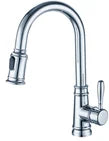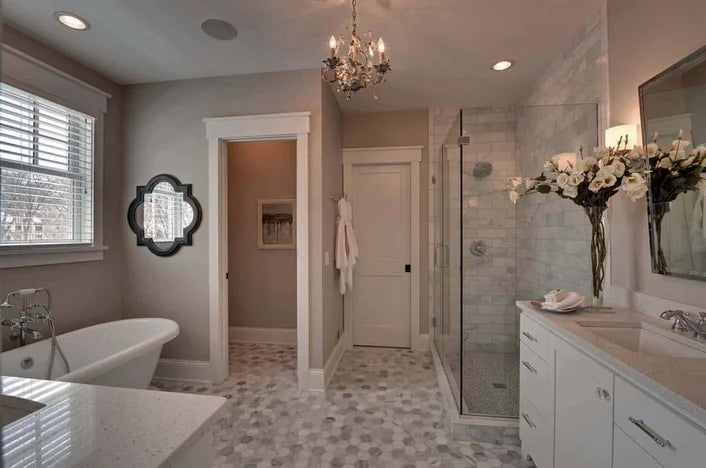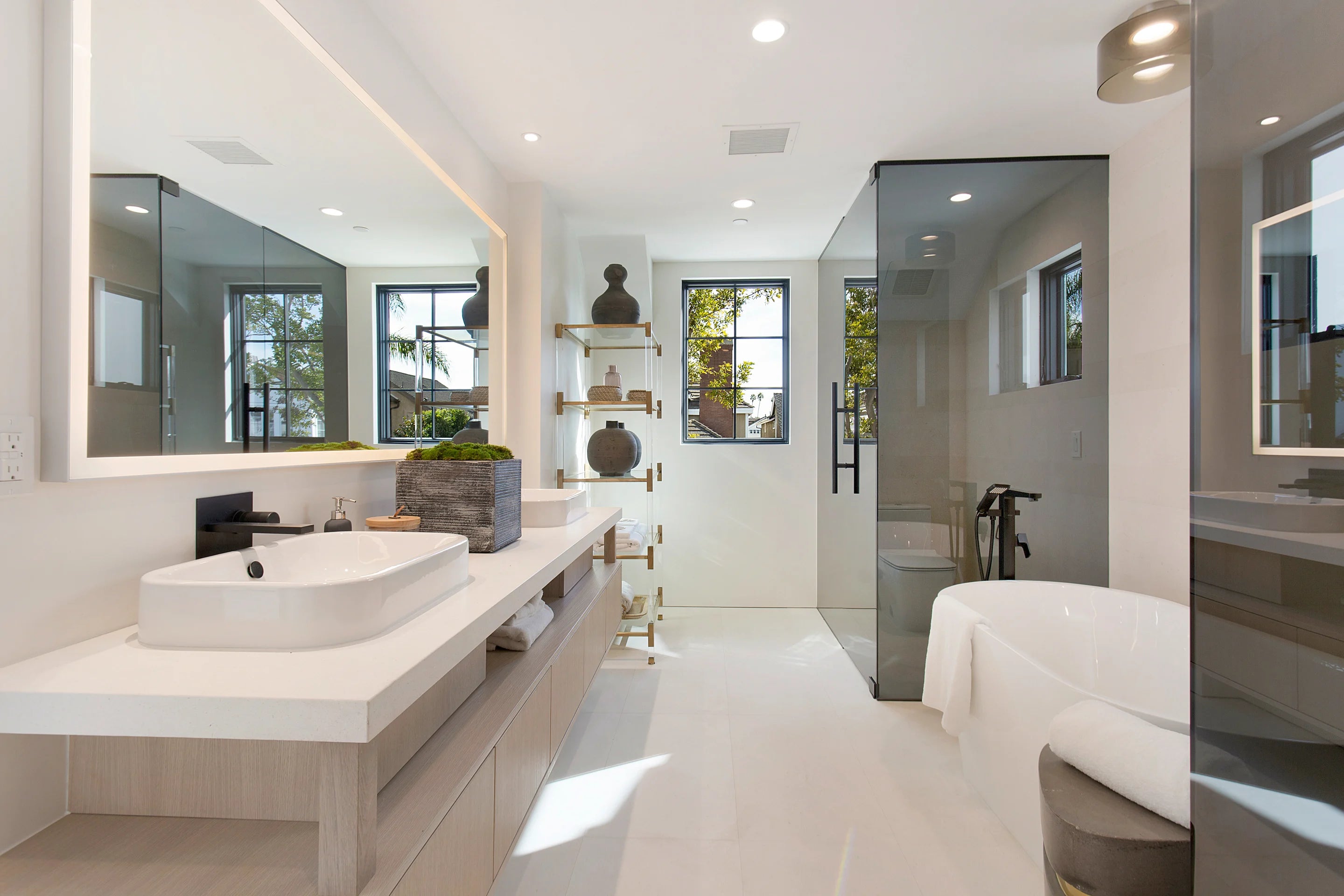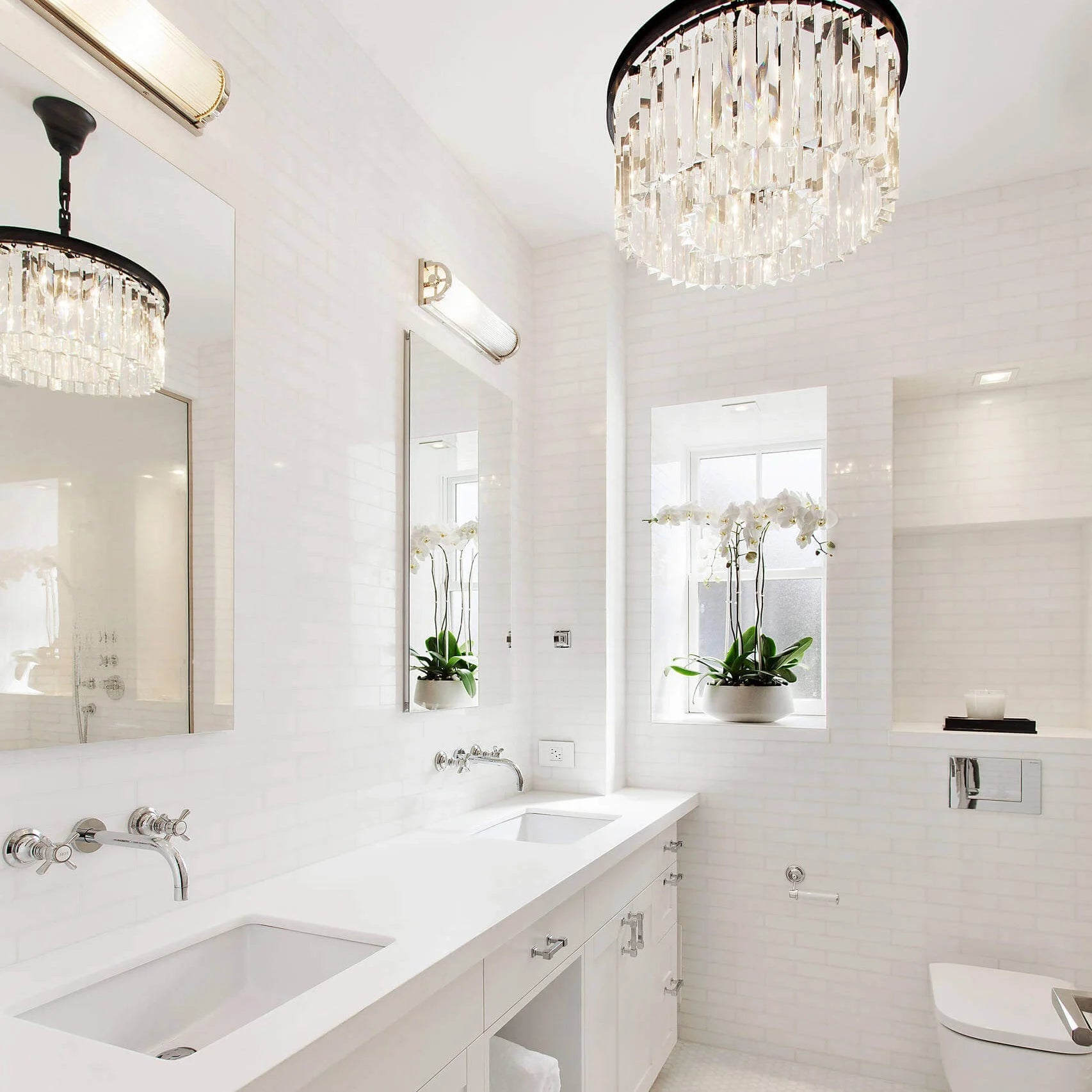How to Define Traditional, Transitional, and Contemporary Style
As there are many choices when it comes to selecting fixtures for your bathroom update or remodel, style or the "overall aesthetic" definitely comes to mind. There are usually three main styles that dominate the decorative fixtures market, traditional, contemporary, and transitional.
Once you read this guide hopefully you'll have a better understanding of which style best suits your next project.
Traditional Style
You'll typically see homage being paid towards historical and timeless design from colonial, Victorian, or even Georgian styles with traditional design. Usually, fixtures are a bit heavier in overall appearance and have more intricate details. Within the room, you might find a chandelier, subway tile, and warm soothing tones with soft white lighting.

If you imagine the type of traditional furniture you'd find in a home most likely there will be hand-carved wooden features, patterned fabrics, studded upholstery, and rich darker wood tones with ornate accents with gentle curves.
The popular finish of a typical traditional fixture can also be a good indication of this style. Typically in the industry, you'll see polished nickel, oil-rubbed bronze, copper, and brushed nickel.

"The surfaces in a traditional style bathroom are integral to getting the right aesthetic. Countertops typically feature either natural or faux-natural materials, such as granite, engineered stone, or even slate. The selection of wall and flooring tiles range will range from a more historical look to vintage, with penny, subway, or hexagonal tiles being the most sought-after choices." - By One Kindesign June 17, 2016. 53 Most fabulous traditional style bathroom designs ever.

Contemporary Style

The contemporary style is best known for its modern or minimal design. Plumbing fixtures following this style don't have extra embellishments or clunky hardware. Simple and sleek is usually the best way to think of the contemporary style. You tend to see more square-shaped faucet and trim selections.
Contemporary design examples would be crisp stark angles, borderless designs, floating vanities, under-mount lighting, a bathtub sitting on pebbles, and many other fun elements of design.

In terms of top finishes for contemporary, you tend to see more of the "trendsetting" finishes, such as satin brass, brushed gold, or matte black.
 Credit: @jessblackwellphoto
Credit: @jessblackwellphoto
Designer: @studiostrongwater
Contractor: Apex Builders
Featured faucet: Trova FS308

Change Your Bathroom, Atlanta Georgia
Transitional Style
Now transitional style one can usually find a mix between the two previous styles, the best of both worlds as you will. Whereas contemporary may be too sleek for some while traditional offers to make intricacy for others, transitional style may be the best middle ground style choice.

Sometimes it may be hard to distinguish this style and as and the definition of transitional varies from person to person and which part of the country you are in.
As stated by Anna Kocharian, "Transitional style is a relatively new addition to the design world, with its origins tracing back to the 1950s and the post-modernism era that quickly ensued. Fatigue from the stark, streamlined elements of modernism and post-modernism led to the adoption of cozier pieces, reminiscent of traditional style, which has always married comfort with elegance. " - Here’s Everything You Need to Know About Transitional Design. Published JUN 28, 2020.

Credit. Houzz.com
- Other indicators of a transitional style design would be neutral color pallets
- fixture finishes in matte black or chrome
- the room has a more comfortable feel, not as modern and clean-lined as its contemporary counterpart
“At its core, transitional style is a measured balance of various characteristics of traditional and modern design,” says Renee DiSanto, co-founder of Park & Oak Interior Design. “It combines curves with straight lines, it’s airy and polished, and it’s textured but not cluttered.” - Here’s Everything You Need to Know About Transitional Design. by ANNA KOCHARIAN. Published JUN 28, 2020.
How would you define each style?
We have found many differences in style definitions depending on our showrooms across the country. Not only do the interpretations of the styles differ, but the popularity of the style correlates to geography.
Do you know which style preference you prefer?
Let us know in the comments.
Other Resources:
1 comment
Informative read! Clear definitions of traditional, transitional, and contemporary styles. Appreciate the insights provided. Thanks for sharing!
